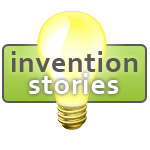 Albert Einstein stated in 1917 that it should be possible, by using light of a certain frequency, to stimulate an atom and force it to release its excess of energy in the form of concentrated light. This process was called “stimulated emission” and it was the beginning of the story behind the laser.
Albert Einstein stated in 1917 that it should be possible, by using light of a certain frequency, to stimulate an atom and force it to release its excess of energy in the form of concentrated light. This process was called “stimulated emission” and it was the beginning of the story behind the laser.
In 1954, following Einstein’s principle, Charles Townes and Arthur Schawlow developed the maser (microwave amplification by stimulated emission of radiation). This device was very close to the laser as we know it today, but instead of visible light it operated using radio signals.
Townes and Schawlow even arrived to calculate that a laser (light amplification by stimulated emission of radiation) would be theoretically feasible, but it was Theodore Maimam who created the first laser beam in 1960 using a dilute of ruby.
The interesting thing about the laser is that it was invented as a result of pure research, the people involved were driven by scientific curiosity rather then financial rewards. The first widely recognized application of the laser appeared only in 1974 with the introduction of bar code scanners.
Since that time the laser has found applications in many fields including medicine, consumer electronics, defense and science. Every year more than $4 billion worth of laser products are shipped worldwide.